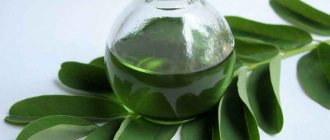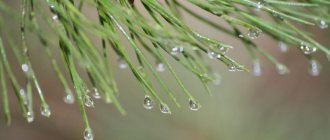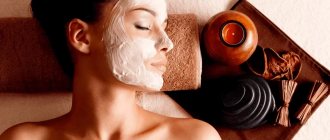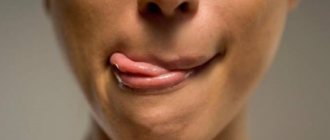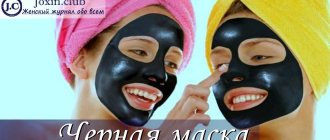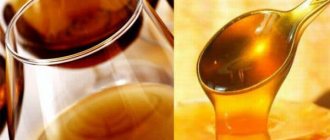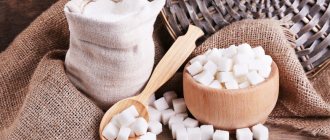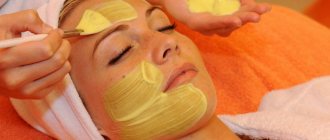Any self-respecting person is attentive to personal hygiene. But he doesn’t always manage to get the desired effect from shampoo or gel from the store. It is difficult to find a good product for removing makeup or for gently cleansing the face.
But there has long been a natural alternative that has proven itself all over the world. And what’s more, you don’t have to look for it on store shelves, and all its components are known and accessible to everyone. We will talk about hydrophilic oil, which can easily be made at home.
What is it?
Oil itself does not mix with water. If you try to do this, you will get an emulsion for a short time. Then the environments will separate again.
The composition of hydrophilic oil includes an emulsifier. This is a component that allows you to mix “hostile” environments. Put aside your concerns about the emulsifier. These substances are also used in the food industry, even the yolk and white are emulsifiers.
However, our ingredient uses a slightly different component. Due to this, fats are wetted and dissolved, and the oil mixed with it acquires hydrophilic properties and is easily removed from the surface of the skin.
Normal or combination skin
Jojoba oil is also popular. Almost all skin types can benefit from it and it leaves the skin feeling hydrated without being too shiny. Can be used for inflammatory diseases and helps with aging. It can also be used all over the body and is very similar to the oil that is naturally produced by our skin.
Coconut oil is easy to find. It remains a favorite choice for many. High in antioxidants and vitamin E, coconut oil can also be used on the face and body as a cleanser or moisturizer. Has natural antibacterial properties. However, coconut oil may cause skin rashes in some people.
Sunflower oil is an excellent choice for normal skin, providing hydration and balancing oil production. Improves restoration of the natural skin barrier.
A Brazilian travels 36 km by bike every day to take his loved one home.
“We are still friends”: Derevianko commented on the breakup with his wife
Women's jeans: before you buy them, you need to pay attention to one detail
How it works?
The resulting mixture binds and dissolves fats on the surface of the dermis without any chemical reactions, even rubbing will be unnecessary.
After mixing with water, a substance is formed that foams slightly. It won’t be difficult to wash it off even with ordinary water. And before you make hydrophilic oil for washing with your own hands, it’s worth studying the market.
Dry and aging skin
Rosehip seed oil is an ultra-nourishing treatment that is ideal for dry or aging skin, especially those areas that show the first signs of aging, such as around the eyes. Rich in vitamins A, C and E, this oil has anti-inflammatory properties and promotes wound healing. It can be used alone or in combination with another product for optimal results.
Known for its skin rejuvenating properties, sweet almond oil is a soothing remedy rich in proteins, minerals and vitamin E. Almond oil is great for moisturizing dry skin.
Avocado oil is a everyone's favorite, ideal for aging skin and increasing collagen production. Avocado oil is rich in antioxidants, vitamins A, D and E and is known to improve skin elasticity.
What do sellers offer?
Most hydrophilic oil is produced by eastern companies, but there are also European representatives. The most widely used Japanese brands are Shu Uemura and Shiseido.
There is even a domestic product from Mi&Ko. Among its advantages are the composition of high-quality products and high efficiency.
But DIY hydrophilic oil recipes can include much more additives, depending on your desires.
What do you need to know to create homemade serum?
Let us remind you once again that serum is a highly concentrated cosmetic product; it contains many more active ingredients than cream. This explains the high effectiveness of this product.
Facial serums contain many vitamins, proteins, hyaluronic acid, acids, essential oils and extracts of various plants. These complexes cope well with skin problems and aging.
In order to prepare serum at home, you will need simple equipment that will also be useful for other cosmetic procedures.
At hand should be a kitchen scale, a glass or porcelain container, a measuring spoon or glass, a glass or wooden stick for mixing ingredients, a dark glass bottle, and a pipette. Rinse all items thoroughly and disinfect with alcohol.
Recipes for everyone
The list also provides an option for making hydrophilic oil without polysorbate with your own hands.
If you have dry skin, then take almond or olive oil 80 mg as a base, mix with an emulsifier (polysorbate 10 mg) and the following essential oils are suitable as an additive: avacado, jojoba 5 ml, orange 10 ml, tocopherol about three drops . The components are thoroughly mixed together and shaken before use.For oily skin, grape seed oil 80 mg is better suited, the emulsifier is the same. Mix with essential oils of chamomile, tea tree, geranium, camphor (five drops each).
If you are allergic to an emulsifier, choose an alternative. For example, Olivederm. Add to 65 mg grape seed oil and 10 tamanu. It wouldn't hurt to add five drops of lemon. Suitable for normal skin.
Also for normal skin, 80 mg of peach oil mixed with 10 mg of polysorbate is suitable. As a supplement, use six drops of peppermint oil.
Ingredients for oil serums
To keep your prepared composition longer, add natural preservatives to it:
- essential oils of lemon, clove, cinnamon, eucalyptus, tea tree, rosemary or cumin;
- extracts of chamomile, calendula, eucalyptus, pine;
- vitamins A, C, E.
These substances will help extend the shelf life of the serum from 3 weeks to 3 months. But in any case, store the finished product in the refrigerator.
Read more about the composition and properties of serums here.
Let's talk about some ingredients that are not so widely known, but form the basis of many serums.
- Squalane is an oil made from shark liver oil or vegetable oils such as olive, argan, amaranth, and wheat germ. It perfectly moisturizes the skin, protects it from aging and from negative external environmental factors.
- Monoi oil is an infusion of tiare flowers in coconut oil. It has an extraordinary aroma, moisturizes the skin well without clogging its pores, smoothes out fine expression wrinkles, eliminates peeling and sunburn, and makes the skin satiny.
- Burago oil (borage) – has a strong restorative property. Contains gamma-linoleic acid, important in solving cosmetic problems.
- Tamanu oil is a rare and expensive remedy. Contains three groups of lipids that, penetrating deep into the skin, restore cell membranes. It has a strong healing and restorative property, at the same time, it acts very gently on the epidermis.
- Hydrolate is essentially flower water obtained by steam distillation. Steam is passed through healthy herbs and flowers, and the resulting condensate collects all the useful substances. The effect of hydrolates on the skin is very delicate and they are used in pure form in care.
- Kojic acid is included in skin care products aimed at combating various hyperpigmentations. It is very actively used in Japanese cosmetics, not only in salons, but also at home. When preparing home remedies, take a concentration of the substance from 0.1% to 1%; a higher dose can lead to irritation and burns of the epidermis.
- Ferulic acid is a recognized and very powerful natural antioxidant. It can be found in apple and orange seeds, but the highest concentration is found in rice bran. Used in cosmetics to prevent aging and skin cancer, to protect against damage from ultraviolet radiation. The acid enhances the effect of vitamin C and stimulates the production of elastin and collagen, treats rosacea and hyperpigmentation, allergies, rosacea and acne.
- Hyaluronic acid is a substance that moisturizes, smoothes and strengthens the skin structure.
Read more in our article: Why our skin needs hyaluronic acid.
Usage
Proper washing is carried out in three steps. Before application, you do not need to cleanse your face of makeup or wash your face; the oil is applied only to dry skin.
Then, without making any effort, massage your face. You should not get your hands wet. In the subsequent action, the massage continues with wet hands, which will turn our oil into a foaming mixture.
Dissolved grease and water-resistant contaminants will break into separate parts and rise from deep pores. And the last step is to wash off the emulsion with plenty of water.After use, a microscopic protective film remains on the face; it retains skin moisture.
Rating of the best cosmetic essential oils
| #1 | #2 | #3 |
| Orange oil | Tea tree oil | Rose oil |
Orange oil Contains geraniol, terpene alcohols, citral, limonene. It is not used in its pure form.
It should be added to the base product, for example, cream, in a ratio of three drops per tablespoon of base.
pros
- Softens the skin.
- Tones.
- Has an anti-cellulite effect.
- Dries out acne.
- Well tightens enlarged pores.
- Normalizes the functioning of the sebaceous glands.
- Eliminates skin flaking.
- Has a pleasant smell.
- Calms.
Minuses
- Not recommended for use by people with low blood pressure.
- May cause allergies.
- The shelf life is only six months from the moment the bottle is opened.
Tea tree oil Contains monoterpenes, B-terpineol, L-terpineol. In addition to using it on the face, this oil stimulates hair growth and whitens teeth.
But when using this remedy, you must strictly adhere to the dosage. In its pure form, it is used only for the disinfection of superficial small wounds and cracks.
Also in its pure form it is used to treat dandruff and nail fungus. For cosmetic purposes, it should be added to creams and masks or other oils in a ratio of 1 to 10, that is, 1 drop of tea tree essential oil per 1 gram of massage oil or cream, or other base.
pros
- Increases skin turgor.
- Removes toxins.
- Moisturizes.
- Nourishes.
- Dries out acne.
- Heals wounds and cuts.
- Relieves inflammation.
- Whitens age spots.
- Suppresses the growth of pathogenic fungi and bacteria.
- Stimulates blood circulation.
- Evens out the texture and color of the skin.
Minuses
- Not suitable for dry skin, as it dries it out even more and can cause burns.
- If your skin is sensitive, it may cause allergies.
Rose oil This oil is obtained from rosehip, or more precisely, its flowers. It is an excellent anti-aging product, great for aging skin.
Results are visible after at least a month of regular use. This product is recommended for use in cases of poor environmental conditions, fatigue and damage.
In addition, the oil helps increase erotic desire, performance and even creativity. Apply by adding three drops per dose of face cream or ten drops per 250 ml of tonic or lotion.
pros
- Tones the skin.
- Has a whitening effect.
- Rejuvenates.
- Stimulates collagen production.
- Speeds up metabolism.
- Improves regenerative abilities.
- Increases elasticity.
Minuses
- With constant use, some women note the appearance of a mild headache.
Ylang-Ylang oil Mix with other cosmetic oils in the proportion of 3 drops per tablespoon of base product. Stimulates collagen production.
It is often combined with avocado oil, peach oil and olive oil. Due to the fact that the product has anti-inflammatory properties, the oil reduces skin itching and eliminates the effects of ultraviolet radiation.
pros
- Tones.
- Softens.
- Has an anti-inflammatory effect.
- Treats acne, dermatoses, eczema.
- Tightens pores.
- Suitable for all skin types.
Minuses
- Oil cannot be added to purchased masks and creams, as this is fraught with unwanted chemical reactions.
Lemon oil Using this oil on dry facial skin eliminates flaking. If your skin is oily, the product will eliminate acne and rosacea.
It is necessary to add only one drop of lemon oil per 4 grams of cream or other natural oil intended for cosmetic procedures. If you are going to do a massage, then one drop per two grams of massage oil is enough.
pros
- Promotes collagen production.
- It has an immunomodulatory and antiseptic effect.
- Tones the skin.
- Rejuvenates.
- Stimulates cell renewal processes.
- Increases elasticity, smoothes the relief.
- Lightens age spots and freckles.
- Tightens the oval of the face.
Minuses
- Since it is citrus, an allergic reaction is possible.
- Cannot be used by people who have undergone chemotherapy.
Contraindications
Before first use, it is recommended to make sure that you are not allergic to the oil. To do this, they usually conduct an irritability experiment.
Anoint your wrist and the inside of your elbow. If within a few hours you do not develop a rash, allergies or other negative effects on your skin, then feel free to use the prepared product.
How to choose an oil composition for a serum
This table shows which essential oils are suitable for different skin types. You can independently select a composition of esters and add them to any base cosmetic or vegetable oil.
| Skin type | Essential oil | Oil compositions (dosage in drops) |
| Normal skin | Lavender, orange, lemon, geranium, chamomile, jasmine, ylang-ylang, neroli, rose. | 1. Geranium and lavender (5), neroli (2), orange oil (3), ylang-ylang (1). 2. Jasmine (2), chamomile (5), rose (1), lavender and sandalwood (3). |
| Dry skin | Essential oil benzoin, vetiver oil, ylang-ylang, lavender, neroli, chamomile, palmorosa, rosewood. | 1. Benzoin oil (3), vetiver (2), ylang-ylang (3), rosewood (3), palmarosa (5). 2. Chamomile oil (5), lavender (3), neroli and ylang-ylang (2). |
| Sensitive skin | Essential oils of hyssop, lavender, lemon balm, chamomile, sandalwood, yarrow. | 1. Chamomile oil (5), lemon balm (5), yarrow (5), rosemary (3). 2. Chamomile (5), lavender (5), sandalwood (5), hyssop (2). |
| Oily skin | Bergamot, verbena, juniper, ylang-ylang, camphor, lavender, lemongrass, petitgrain, rosemary, thyme. | 1. Bergamot oil (5), verbena and petitgrain oil (3), thyme and ylang oil (3). 2. Lavender (3), lemongrass (3), rosemary (3), thyme and myrtle (2). |
| Aging skin (anti-wrinkle) | Carrot seed oil, myrrh, neroli, frankincense, sandalwood, ylang-ylang, vetiver oil, benzoin oil. | 1. Benzoin oil (3), vetiver oil (3), ylang-ylang (4), sandalwood and frankincense (5). 2. Carrot seed oil (5), frankincense oil (5), myrrh and neroli oil (3). |
Rules for applying serum to the skin
And let us remind you of several important points in using facial serum:
- Serum is an additional care product and should be used in courses up to 4 times a year for 2 weeks to 2 months.
- Since the serum contains many active oils, before using it, conduct a tolerance test: lubricate the skin on the inner bend of the elbow with a drop of the product and observe the reaction for 20-30 minutes.
- You can apply the serum to problem areas of the skin 1-2 times a day (morning and evening) or 1-3 times a week for preventive purposes.
- In the morning, use the serum at least half an hour before going outside, and in the evening – an hour before bedtime.
- Apply the product with light patting movements. After 15 minutes, blot the residue with a napkin if the serum is not completely absorbed.
- Do not use a lot of product; a single serving should be the size of an average pea.
- First, cleanse your skin well and wipe with tonic or hydrosol.
- After the oil serum, be sure to apply a moisturizing or nourishing cream for your skin type.
- Prepare and store the serum in a clean, dry glass or porcelain container in a cool, dark place (for example, on the refrigerator door).
- It is better to use a dark bottle with a dispenser for the product or use a pipette.
- Shake the composition well before use.
How to prepare anti-aging serum with vitamin C and aloe vera:
So, you have learned how to prepare cosmetic serum for facial skin at home. We hope you find the recipes for these elixirs useful. Share this article with your friends on social networks. Thank you!
Storage
Before making hydrophilic oil with your own hands, purchase a dark glass container with a dispenser, since storage is carried out only in it.
The oil should be purchased or prepared in small quantities, as its shelf life does not exceed one month. Storage temperature 16-25 degrees Celsius. Shake the bottle before use.
The best oils for aging skin
With age, the synthesis of collagen and elastin in skin cells slows down, causing it to lose tone, become drier and flabby. Oils for aging epidermis have a rich texture and contain a high amount of vitamins, antioxidants and nutrients.
As a result, they perfectly saturate, moisturize and tighten the skin, increase its elasticity and smooth out wrinkles. For aging epidermis, in addition to the course of using oils, we recommend making mask-wraps based on them for the face, neck and décolleté area 1-2 times a week.
Solgar Evening Primrose Oil
5.0
★★★★★
editorial assessment
100%
buyers recommend this product
Solgar Evening Primrose Oil is one of the brand's bestsellers, suitable for external and internal use. The product in capsule form contains a light yellow liquid rich in vitamins, linoleic and gamma-linoleic acids. The product is quickly absorbed and does not leave stickiness, instantly eliminating dryness and tightness.
Evening primrose oil stimulates the synthesis of its own collagen, has pronounced moisturizing, nourishing, smoothing, tightening, antioxidant and brightening properties. With its regular use, problems of pigmentation, atony, wrinkles and dehydration disappear. Using evening primrose oil in the morning will protect your skin from the damaging effects of ultraviolet rays throughout the day.
Advantages:
- Rich chemical composition;
- Light and quickly absorbed consistency;
- Has no aroma;
- Anti-aging effect;
- Strengthens the female body;
- Does not leave a greasy film.
Flaws:
- Overpriced in Russia (about 2000 rubles for 60 capsules).
Solgar evening primrose oil is recommended for external course use for women over 35 years of age suffering from pigmentation, premature wrinkles and excessive dry skin.
Stenders Rose Essential Oil
5.0
★★★★★
editorial assessment
100%
buyers recommend this product
The product of steam distillation of rose petals collected in Antalya has a sensual aroma and a pronounced anti-aging effect. The chemical composition of Stenders rose ester is rich in phenol, terpenes, alcohols and geranium acid. A beauty concentrate with a bright floral aroma has a pronounced decongestant, tonic, firming, rejuvenating, soothing and restorative effect.
Rose essential oil is effective in the fight against wrinkles, rosacea, dark circles, peeling, pigmentation and post-acne. To transform aging skin, use the concentrate together with cosmetic oil in proportions of 1:10, applying the cocktail daily for a month.
Advantages:
- Complex caring effect;
- Pleasant aroma;
- Economical consumption;
- Combats various skin problems;
- Gets rid of bags and dark circles under the eyes;
- Improves complexion.
Flaws:
- Price is about 1600 rubles per 10 ml.
Rose essential oil from Stenders is recommended for use by every representative of the fairer sex who wants to preserve their youth and reveal their femininity.
"Spivak" Cocoa butter
4.9
★★★★★
editorial assessment
98%
buyers recommend this product
Unrefined cocoa butter from Spivak is the richest source of tocopherols, trace elements, vitamins and fatty acids. The butter, which melts at a temperature of 40 degrees, has a rich gourmet aroma and intense regenerating properties.
The product with a thick and dense texture is not completely absorbed and leaves a thin protective film on the skin. With regular use, it returns tone, elasticity, smoothness, uniform tone to the fading epidermis and eliminates the problems of dryness and wrinkles.
In addition, cocoa butter from Spivak is an ideal product for maintaining a well-groomed cuticle and express restoration of dry and flaky areas of the body.
Advantages:
- Pleasant dark chocolate aroma;
- Economical consumption;
- Rich chemical composition;
- Anti-aging effect;
- Restores dry skin;
- Affordable price (about 350 rubles per 100 g).
Flaws:
- Poorly absorbed.
Cocoa butter from Spivak is an affordable option for regular skin care for people over 45 years old, which will relieve extreme dry skin, deep wrinkles and sagging.
Opinions
Once tried, people no longer refuse such a simple and exquisite remedy. And reviews about DIY hydrophilic oil leave only positive ones.
Among them, they note that the oil does not leave a feeling of tightness on the skin, after its use there is no oily sheen, and due to its versatility, the use of oil allows you not to spend money on shampoos and shower gels.
Harm of facial oils
Don’t blindly trust labels and buy the first cosmetic product you come across, or run to the kitchen and pour vegetable oil on your face in which to fry pancakes or potatoes. You are unlikely to get any benefit from this. But you can feel the full extent of the harm from kitchen oil on your face.
First you need to understand the needs and initial data of your skin.
Incorrectly selected or incorrectly used oil can only worsen the condition of the skin - dry it out, cause inflammation or cause allergic reactions. Even the most natural remedies are not at all as harmless as we would like to think about them.
This is exactly what professional cosmetologists warn those who have decided that since the oil is natural, it means it is 100% safe and healthy.
Well, there are a couple of rules that you should immediately take into account if you decide to experience the magical power of natural oils:
- Immediately “NO” to oils that directly contain chemical components - parabens, silicones, mineral oil (the question is whether to write this information at all.)
- The second “NO” can be safely said to cheap oils of unknown origin. There are no miracles.
This may upset some people, but if you think that there is no difference between apricot kernel oil from a pharmacy for 50 rubles and the same apricot oil from iherb for 500 rubles, then most likely you are mistaken.
The desire to save money is understandable, but believe me, quality really costs money. And valuable oils are valuable because high-quality raw materials and the correct process of their production cost a certain amount of money. I won't reveal anything new here.
I have already verified this from my own experience, and you can also verify that, if you wish, fortunately, cheap oils are really cheap and easily accessible. It’s just that you shouldn’t immediately draw conclusions after experimenting with pharmaceutical oils or from who knows what kind of stall.
In my case, from the pharmacy set, perhaps, only sea buckthorn worked 100%, with the exception of the “side effect” in the form of bright orange skin due to the increased content of carotene in it. Otherwise, using them is like smearing plasticine on your face. Still, you should save on your face (and on yourself) in the last place, then the question “is it healthy to smear your face with oils” simply shouldn’t arise.
In my opinion, the best way to save money in this matter is not to skimp on quality, but to buy cosmetics in reliable, trusted stores during various promotions and sales . Fortunately, they happen quite often and thus you can always find a good oil for any budget.
To do this, I talk about the most interesting and profitable promotions on my blog and there is a separate post with current promotional codes on the iHerb website, as well as instructions for beginners on iHerb.
DIY photo of hydrophilic oil
When to use facial oil and can you use it every day?
“Facial oils can be used as needed. In general, they should be applied as a last step (after serum and/or moisturizer) but before SPF and makeup. And don’t forget about oil as the final skincare step in the evening,” the expert notes. It should be taken into account that the oil base does not interact well with SPF products - it can dissolve them. To be on the safe side, it is recommended to apply the oil at night.
While this product can certainly be used daily, you need to be careful not to let your skin become too dependent on it. "To avoid this, you should occasionally switch out your oil for an equally nourishing combination of ceramides and hyaluronic acid," says dermatologist Debbie Thomas.
Instagram content
This content can also be viewed on the site it originates from.
We select organic oil according to skin type
Combination or normal skin is not prone to rashes, redness, or peeling. Combination, oilier in the T-zone than normal. For those with oily skin, avoid cosmetic products with heavy, comedogenic fats. From natural ones, give preference to: argan oil, almond oil, jojoba oil, grape seed oil, rose hip oil, shea butter, and olive oil.
Dry facial skin often itches, flakes, and is prone to redness. Organic fats will help get rid of discomfort, a feeling of tightness, and restore hydrobalance. The best in the fight against dryness and flaking are considered to be: cocoa, shea, olive, hazelnut and argan oils. For winter, stock up on jars of macadamia or arctic berry oils. They protect from wind and frost. You can add a few drops to hand creams and eye areas.
Oily skin is characterized by excess sebum. As a result, sebum clogs the pores, causing comedones and blackheads to form. Those with oily skin types notice enlarged pores in the T-zone. Cosmetic oil will help fight shine, improve appearance and reduce sebum production. Fatty acids dissolve excess fat and dirt in the pores. Regular use of oil normalizes the condition of the epidermis and improves appearance. The only rule is not to overdo it. Apply a thin layer, remove excess with a napkin. Sebum secretion is regulated by moringa, jojoba, and hemp seed oils.
Skin prone to acne and rashes needs special care with antibacterial agents. For treatment and maintenance of normal condition, the use of neem and black cumin oils and watermelon seed is recommended. Before use, it is better to test on a small area to exclude allergic reactions.
Sensitive skin also needs an individual selection of care products. We recommend buying natural oil in mini formats and testing it on small areas to prevent irritation and redness. For sensitive skin, use argan, avocado, shea and jojoba oils.
We talked about natural oils, now let’s look at the best cosmetic products. Save the rating to your bookmarks to quickly find useful information when choosing a product.
The rating was compiled based on numerous reviews of cosmetic products. Selected cosmetic oils from different price segments, luxury, premium, mass market.
